Ever read the name of a commercial LED light on Amazon and laughed? Some are indeed funny.
Why is a shoebox light called a shoebox? Why is a corn bulb called a corn bulb? What do they do? What’s the typical application? Why should I use one over the other? What specifications are important when selecting from the myriad different LED light bulb types? Everything you need to know is contained in the compendium below. (*NOTE: Except for the A19, this is a reference guide for commercial light bulbs that illuminate large areas. For instance, we have 30W corn lights in bathrooms here at EverWatt and even that is a 150W incandescent equivalent. Many in the list below are in the 100W+ range.)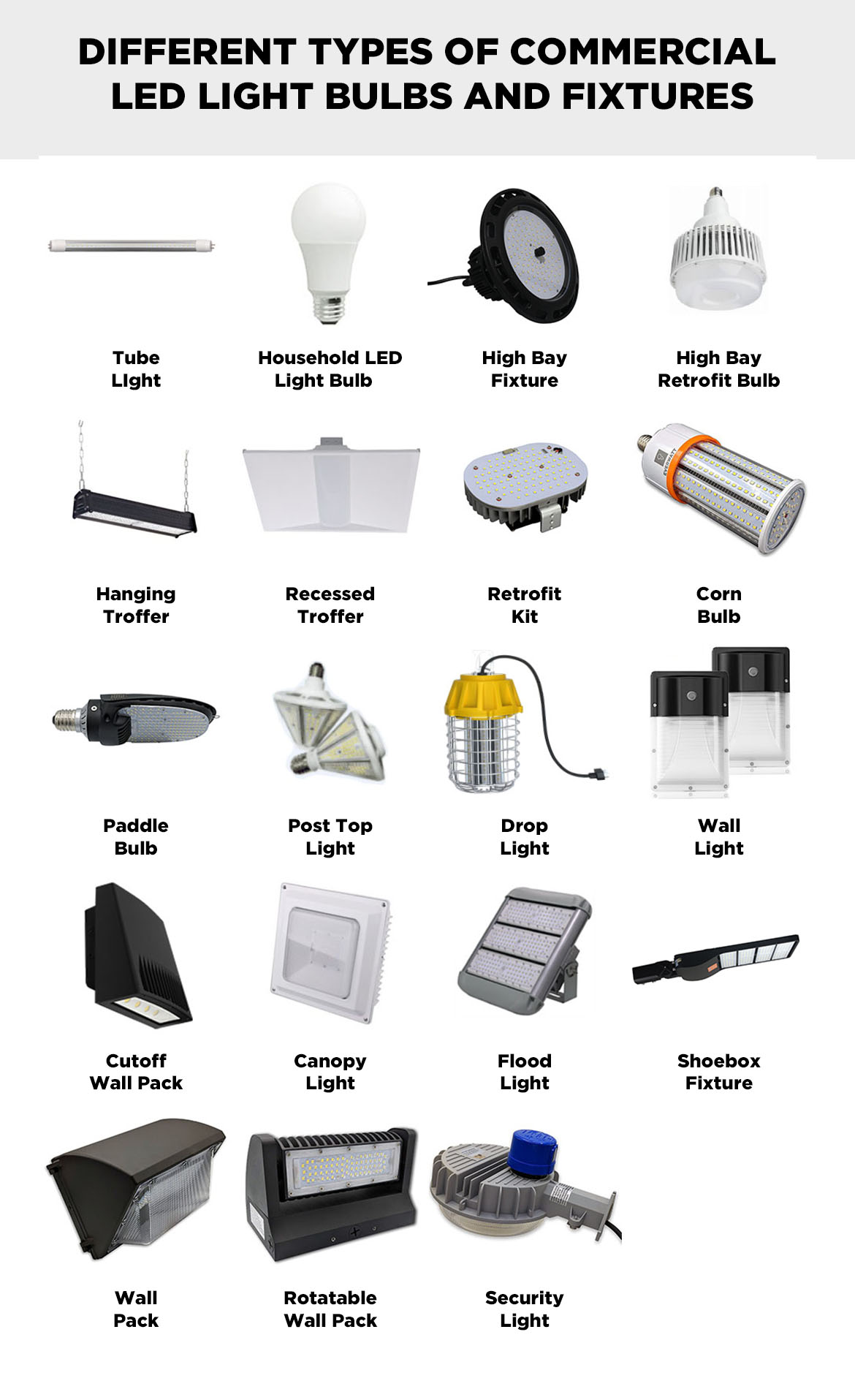
| Light Bulb Type | Also Known As | Bulb/Fixture | Indoor | Outdoor | Base Sizes |
|---|---|---|---|---|---|
| Indoor LED Light Bulb and Fixture Types | |||||
| Tube Light | tube stick | Bulb |

|
T8, T12, T13, Others | |
| Household LED Light Bulb | A19 | Bulb |

|
E26, E39, Others | |
| High Bay Fixture | UFO | Fixture |

|
N/A | |
| High Bay Retrofit Bulb | high bay corn light | Bulb |

|
E26, E39, Others | |
| Hanging Troffer | high bay troffer | Fixture |

|
N/A | |
| Recessed Troffer | panel troffer | Fixture |

|
N/A | |
| Retrofit Kit | Fixture |

|
N/A | ||
| Indoor/Outdoor LED light bulb and fixture types | |||||
| Corn Bulb | corn cob, 360° retrofit bulb | Bulb |

|

|
E26, E39, Others |
| Paddle Bulb | 180° retrofit bulb | Bulb |

|

|
E26, E39, Others |
| Post Top Light | acorn bulb | Bulb |

|

|
E26, E39, Others |
| Drop Light | work light, construction light | Bulb |

|

|
E26, E39, Others |
| Wall Light | Fixture |

|

|
N/A | |
| Cutoff Wall Pack | Fixture |

|

|
N/A | |
| Outdoor LED light bulb and fixture types | |||||
| Canopy Light | Fixture |

|
N/A | ||
| Flood Light | Fixture |

|
N/A | ||
| Shoebox | street light, parking lot light | Fixture |

|
N/A | |
| Wall Pack | Fixture |

|
N/A | ||
| Rotatable Wall Pack | Fixture |

|
N/A | ||
| Security Light | dusk til dawn | Fixture |

|
N/A | |
Indoor LED light bulb types
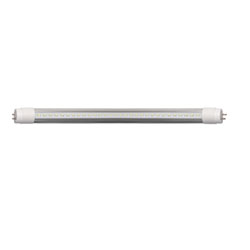 This replaces your regular ole gas-filled-tubes-office-space light. You know the tubes you have behind the plastic panels in the roof of an office building, or worse yet, in the hanging, uncovered fixtures? The ones that make you
look and see how close to 5pm it is? These are an LED version of that. Work the same way except like most of these, you have to bypass the ballast that drives the incumbent CFL version.
This replaces your regular ole gas-filled-tubes-office-space light. You know the tubes you have behind the plastic panels in the roof of an office building, or worse yet, in the hanging, uncovered fixtures? The ones that make you
look and see how close to 5pm it is? These are an LED version of that. Work the same way except like most of these, you have to bypass the ballast that drives the incumbent CFL version.
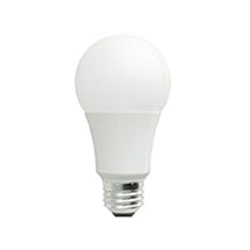 This is your regular old Joe light bulb, but with LEDs instead of a wire filament or poisonous gas, or both. It’s just made to look like the household light bulbs we’re used to. Every other bulb or fixture on this page is for commercial
use, but we figured this deserved at least some representation.Common examples of this type are the Phillips Hue or the GE ‘C’ with which you can change the light color temperature to give a room a different look and feel. Every
other bulb type on this page is all business.
This is your regular old Joe light bulb, but with LEDs instead of a wire filament or poisonous gas, or both. It’s just made to look like the household light bulbs we’re used to. Every other bulb or fixture on this page is for commercial
use, but we figured this deserved at least some representation.Common examples of this type are the Phillips Hue or the GE ‘C’ with which you can change the light color temperature to give a room a different look and feel. Every
other bulb type on this page is all business.
 If you’re in a warehouse and you look up, you’re likely to see one of two things: long hanging tube lights or UFOs. This is a replacement for your typical giant metal-halide bulb that goes in a high bay fixture. Again, the ballast
for any high-pressure gas light will need to be bypassed, but that’s a good thing, because not only do lights burn out, so do ballast. Now, instead of having two things that go out all the time, you have one thing that pretty
much never goes out. The most common wattage you’ll see in a warehouse for the bulb being replaced is a 400W metal-halide bulb inside the fixture. This unit typically replaces those 400W metal halide bulbs with 100W or 150W of LEDs,
producing just as much or more light than before.
If you’re in a warehouse and you look up, you’re likely to see one of two things: long hanging tube lights or UFOs. This is a replacement for your typical giant metal-halide bulb that goes in a high bay fixture. Again, the ballast
for any high-pressure gas light will need to be bypassed, but that’s a good thing, because not only do lights burn out, so do ballast. Now, instead of having two things that go out all the time, you have one thing that pretty
much never goes out. The most common wattage you’ll see in a warehouse for the bulb being replaced is a 400W metal-halide bulb inside the fixture. This unit typically replaces those 400W metal halide bulbs with 100W or 150W of LEDs,
producing just as much or more light than before.
 This is just like the guy right above it, except you screw it into an existing fixture instead of replacing the fixture. The benefit is ease of use in certain applications, but while this may avoid replacing the fixture, you’ll
have to bypass the ballast anyway, so you may just want to replace the whole fixture.
This is just like the guy right above it, except you screw it into an existing fixture instead of replacing the fixture. The benefit is ease of use in certain applications, but while this may avoid replacing the fixture, you’ll
have to bypass the ballast anyway, so you may just want to replace the whole fixture.
 Just like the high bay fixture is a great replacement for your typical warehouse metal halide fixtures, this is a great replacement for CFL tube lights in a warehouse. Just replace the whole thing holding the CFL tubes and hang
this instead, and you’ll stop having to be annoyed every day by the conflict between your desire to avoid looking at the sporadically burned out CFL tubes and your aversion to renting a skyjack to replace them every few weeks.
Just like the high bay fixture is a great replacement for your typical warehouse metal halide fixtures, this is a great replacement for CFL tube lights in a warehouse. Just replace the whole thing holding the CFL tubes and hang
this instead, and you’ll stop having to be annoyed every day by the conflict between your desire to avoid looking at the sporadically burned out CFL tubes and your aversion to renting a skyjack to replace them every few weeks.
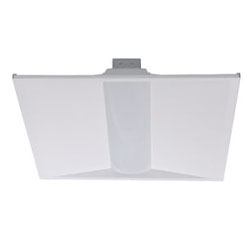 Just like the hanging troffer fixture replaces hanging CFL tubes, the recessed troffer usually replaces your typical CFL tubes inside of panels. You know those thing squares in the ceiling of offices where every fifth one or so
is a translucent plastic cover that contains the soul-draining CFL tubes? These replace that.
Just like the hanging troffer fixture replaces hanging CFL tubes, the recessed troffer usually replaces your typical CFL tubes inside of panels. You know those thing squares in the ceiling of offices where every fifth one or so
is a translucent plastic cover that contains the soul-draining CFL tubes? These replace that.
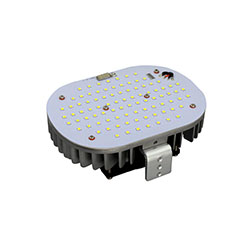 Retrofit kits usually have interesting applications. They are for when you can’t simply screw an LED bulb into the old fixture and bypass the ballast, but you still don’t feel like replacing the fixtures. LED retrofit kits allow
you to keep the fixture as it is, but replace the light with an LED light in its place. It’s basically used for the situations paddle bulbs (below) are used, but for fixtures where the light doesn’t screw in (which is where you’d
use a paddle bulb).
Retrofit kits usually have interesting applications. They are for when you can’t simply screw an LED bulb into the old fixture and bypass the ballast, but you still don’t feel like replacing the fixtures. LED retrofit kits allow
you to keep the fixture as it is, but replace the light with an LED light in its place. It’s basically used for the situations paddle bulbs (below) are used, but for fixtures where the light doesn’t screw in (which is where you’d
use a paddle bulb).
Indoor/Outdoor LED light bulb types
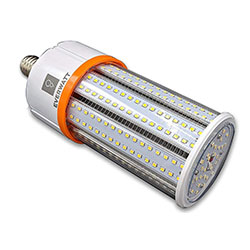 Ahhhhh, what to say about the corn bulb… It is the most versatile of LED bulbs. Just screw it in to gazillions of different applications and go (assuming of course that you bypass the ballast). It’s called a corn bulb because
the rows of LEDs running down the bulb make it resemble some sort of Transformers robot corn. They can screw into your regular household fixture socket (E26 or “standard”) as well as your typical big-bulb warehouse socket (E39 or
“mogul”). These are also available in less common socket sizes. Here’s a link to our
corn light bulbs on Amazon where you can see the spec sheet for all the stats.
Ahhhhh, what to say about the corn bulb… It is the most versatile of LED bulbs. Just screw it in to gazillions of different applications and go (assuming of course that you bypass the ballast). It’s called a corn bulb because
the rows of LEDs running down the bulb make it resemble some sort of Transformers robot corn. They can screw into your regular household fixture socket (E26 or “standard”) as well as your typical big-bulb warehouse socket (E39 or
“mogul”). These are also available in less common socket sizes. Here’s a link to our
corn light bulbs on Amazon where you can see the spec sheet for all the stats. 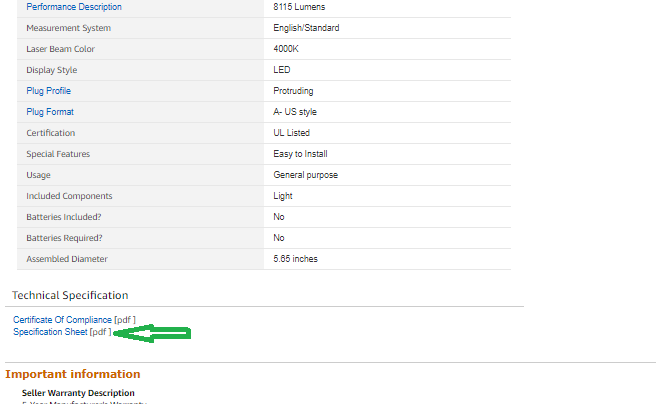
amazon led corn light spec sheet located here
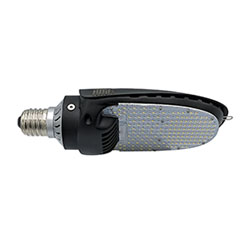 Called so because it looks like, well, a paddle. Paddle bulbs are some times also called a 180 degree corn light. Reason being, it’s conceptually very similar in design to a corn light. It just… doesn’t look anything like corn.
Here’s a
link to our LED paddle bulbs on Amazon where you can see the specifications and the different types of led light bulbs we have in paddle form Paddle bulbs are also an extremely versatile option for retrofitting different types
of non-led lights, because they can screw into fixtures that are directional that previously contained metal-halide or high pressure gas lights. Things like wall pack lights, canopy lights, street lights, etc. See the image below
for a better understanding of how an LED paddle bulb could be used.
Called so because it looks like, well, a paddle. Paddle bulbs are some times also called a 180 degree corn light. Reason being, it’s conceptually very similar in design to a corn light. It just… doesn’t look anything like corn.
Here’s a
link to our LED paddle bulbs on Amazon where you can see the specifications and the different types of led light bulbs we have in paddle form Paddle bulbs are also an extremely versatile option for retrofitting different types
of non-led lights, because they can screw into fixtures that are directional that previously contained metal-halide or high pressure gas lights. Things like wall pack lights, canopy lights, street lights, etc. See the image below
for a better understanding of how an LED paddle bulb could be used. 
led paddle bulb usage scenarios
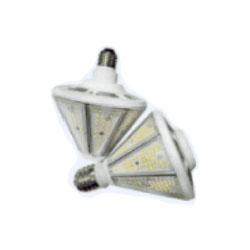 The typical application for LED acorn bulbs or “post top” bulbs is to go inside one of those imitation gas lights or “decorative post top” lights you see in a park or to decorate the side of a house. Other than that, it’s basically
a corn light.
The typical application for LED acorn bulbs or “post top” bulbs is to go inside one of those imitation gas lights or “decorative post top” lights you see in a park or to decorate the side of a house. Other than that, it’s basically
a corn light.
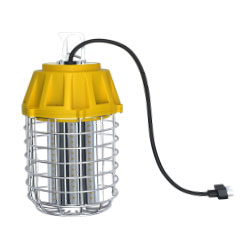
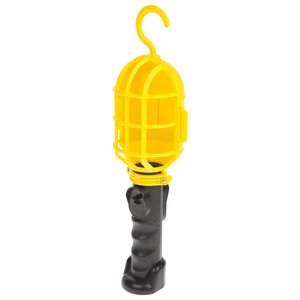
Your old-school incandescent drop light
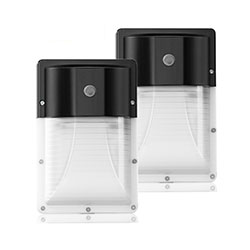 Typically, the difference between a wall light and a wall pack is size (in both wattage as well as physical size). They can be used interchangeably, but in common terms, a wall light is a low wattage (for LEDs, let’s say 5W-30W)
fixture where as a wall pack is usually 30W and up, and is bigger. Wall lights are about the size of your hand, and wall packs are about the size of a bread box… although I’m not sure I’ve ever actually seen a bread box. I’m also
now feeling like there should be a light called a bread box light. … hmmmmm.
Typically, the difference between a wall light and a wall pack is size (in both wattage as well as physical size). They can be used interchangeably, but in common terms, a wall light is a low wattage (for LEDs, let’s say 5W-30W)
fixture where as a wall pack is usually 30W and up, and is bigger. Wall lights are about the size of your hand, and wall packs are about the size of a bread box… although I’m not sure I’ve ever actually seen a bread box. I’m also
now feeling like there should be a light called a bread box light. … hmmmmm.
 The “cutoff” in an LED cutoff wall pack is referring to how the light is designed to angle or aim the light more downward than your traditional wall pack, illuminating the side of a wall or walkway. No-cutoff wall packs are meant
to flood the outside of a wall with light. Occasionally you will see these affixed to poles. They are also often used for building ingress/egress locations to specifically light the doorways.
The “cutoff” in an LED cutoff wall pack is referring to how the light is designed to angle or aim the light more downward than your traditional wall pack, illuminating the side of a wall or walkway. No-cutoff wall packs are meant
to flood the outside of a wall with light. Occasionally you will see these affixed to poles. They are also often used for building ingress/egress locations to specifically light the doorways.
Outdoor LED light bulb types
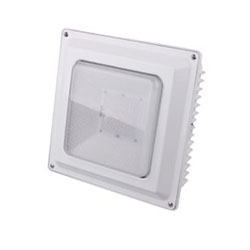 Most of the applications of canopy lights are just that, canopies. These are the lights you see underneath gas station awnings while you’re filling up your car. Like wall packs, LED canopy lights allow you to have acrylic covers
instead of glass (also applies to many other led light bulb types), avoiding that yellow-teeth color you get with metal halide and high-pressure-sodium fixtures. You can find canopy lights in both square and round fixtures. If you
don’t want to replace the entire fixture, consider a
LED retrofit kit instead.
Most of the applications of canopy lights are just that, canopies. These are the lights you see underneath gas station awnings while you’re filling up your car. Like wall packs, LED canopy lights allow you to have acrylic covers
instead of glass (also applies to many other led light bulb types), avoiding that yellow-teeth color you get with metal halide and high-pressure-sodium fixtures. You can find canopy lights in both square and round fixtures. If you
don’t want to replace the entire fixture, consider a
LED retrofit kit instead.
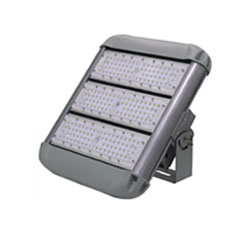 Just like it sounds, an LED flood light is meant to flood a wide area with light, usually to highlight or draw attention to architectural components. For example, to light up the side of a wall to highlight its texturing (Or to
illuminate some trees or topiary gardens).
Just like it sounds, an LED flood light is meant to flood a wide area with light, usually to highlight or draw attention to architectural components. For example, to light up the side of a wall to highlight its texturing (Or to
illuminate some trees or topiary gardens).
 LED shoebox lights don’t really look that much like shoeboxes these days, but the original casting molds for them did, which is why they’re still called that today. Basically “shoebox” light just means an LED streetlight
or parking lot light that goes on a pole. They typically come with a single mounting option but have available alternative options that can be ordered.. Most of our shoeboxes come with a slip-fitter mount, which just slides onto
the end of a pole. There are also direct-mount options (for mounting to the side of a pole) and yoke mount options, for mounting to the side of a building or some other flat surface that is attached to a pole. The large surface area
of these directional lights allows for considerable wattage variants. For example, we sell 90W up to 600W shoe box lights (A 600W shoe box being big enough to replace a 4000W! metal-halide or high pressure sodium). Like most big
outdoor lighting, they usually come equipped with some way to install a variety of controls like motion sensors, photo sensors, timers, controls. If those are not needed, the receptacle or “twist-lock” port to install them can be
replaced with a shorting cap.
LED shoebox lights don’t really look that much like shoeboxes these days, but the original casting molds for them did, which is why they’re still called that today. Basically “shoebox” light just means an LED streetlight
or parking lot light that goes on a pole. They typically come with a single mounting option but have available alternative options that can be ordered.. Most of our shoeboxes come with a slip-fitter mount, which just slides onto
the end of a pole. There are also direct-mount options (for mounting to the side of a pole) and yoke mount options, for mounting to the side of a building or some other flat surface that is attached to a pole. The large surface area
of these directional lights allows for considerable wattage variants. For example, we sell 90W up to 600W shoe box lights (A 600W shoe box being big enough to replace a 4000W! metal-halide or high pressure sodium). Like most big
outdoor lighting, they usually come equipped with some way to install a variety of controls like motion sensors, photo sensors, timers, controls. If those are not needed, the receptacle or “twist-lock” port to install them can be
replaced with a shorting cap. 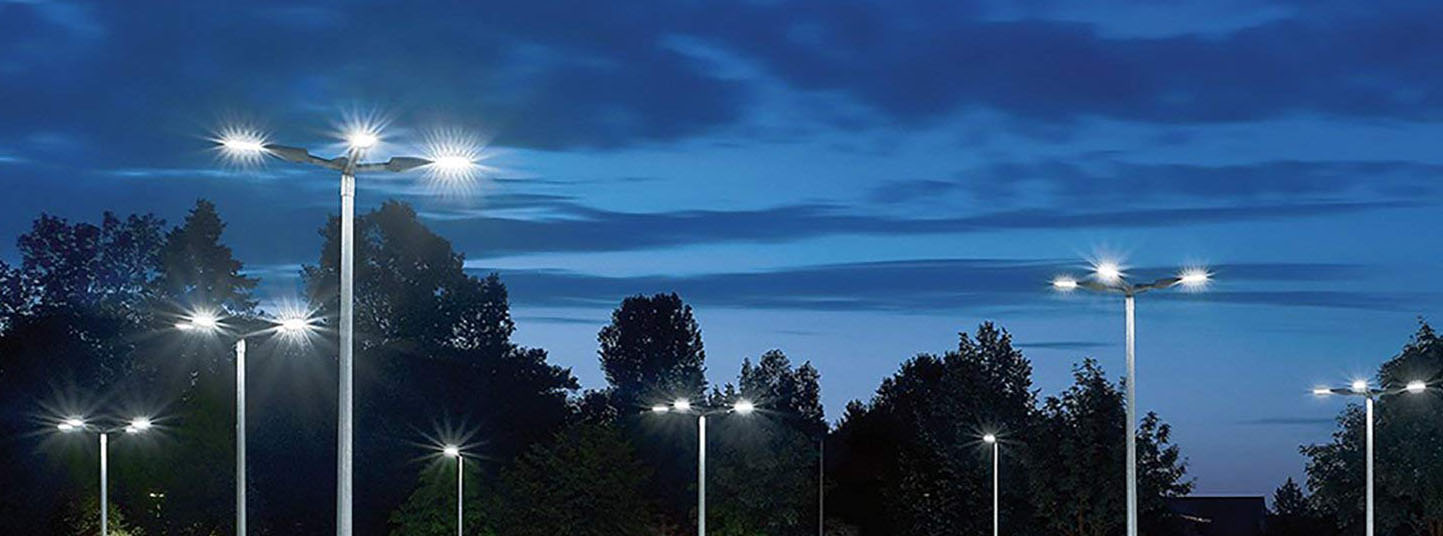
shoe box led lights in action
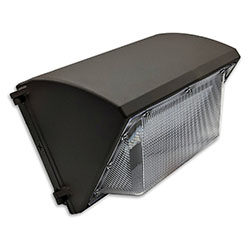 This is your traditional area light that you see on the side of buildings to light parking spots or just the exterior of a building. The traditional metal-halide versions of these LED wall packs look the same as the one in the picture,
but when you are choosing an LED wall pack, there are often many innovative new styles to choose from, because there are a lot more design options. Plus you can get acrylic covers instead of glass (where the gas inside a traditional
wall pack slowly turns the glass into that yellow teeth color).
This is your traditional area light that you see on the side of buildings to light parking spots or just the exterior of a building. The traditional metal-halide versions of these LED wall packs look the same as the one in the picture,
but when you are choosing an LED wall pack, there are often many innovative new styles to choose from, because there are a lot more design options. Plus you can get acrylic covers instead of glass (where the gas inside a traditional
wall pack slowly turns the glass into that yellow teeth color).
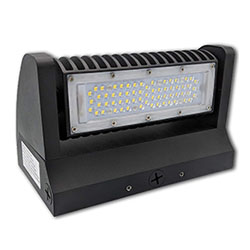 A rotatable wall pack is just like your traditional wall pack, except that instead of being entirely static, the LED modules can be adjusted. This allows you to aim the LED modules more outward or more downward (or perhaps even
updward). This effectively means you have a potential zero-cutoff wall pack, a semi-cutoff wall pack, and a full-cutoff wall pack all in one.
A rotatable wall pack is just like your traditional wall pack, except that instead of being entirely static, the LED modules can be adjusted. This allows you to aim the LED modules more outward or more downward (or perhaps even
updward). This effectively means you have a potential zero-cutoff wall pack, a semi-cutoff wall pack, and a full-cutoff wall pack all in one.
 These are used for typical security applications and can be mounted on a pole or to the side of a wall. They can also be used as street lights or parking lights. They are often equip-able or come standard with a photocell, control,
timer, motion sensor, or some other way to turn it on either during night time or when someone is near.
These are used for typical security applications and can be mounted on a pole or to the side of a wall. They can also be used as street lights or parking lights. They are often equip-able or come standard with a photocell, control,
timer, motion sensor, or some other way to turn it on either during night time or when someone is near.
FAQ
Q: What’s the difference between a light bulb and a light fixture? To put it as simply as possible, a fixture is the thing the light bulb goes in. Some fixtures come with the bulb (or LEDs) and others do not. Q: What does it mean to bypass the ballast? And when do I have to do it? LED lights have a “driver.” All gas-filled lights have a “ballast.” Both effectively do the same thing, but an LED bulb can’t use a ballast and a gas-filled light can’t use a driver. What you definitely don’t want to do is use both. So, that’s why you usually have to bypass the ballast when using an LED light, because it’s highly likely that you’re replacing a non-LED light with your LED light, which will not have a driver and may have a ballast. Q: How much energy is an LED bulb or fixture going to save compared to its CFL, metal-halide, high pressure gas, or incandescent equivalent? Well, these are round numbers and not exact, but for a rule of thumb, LEDs are five times as efficient as incandescent (if you’re spending $1 a month you’ll be spending $0.20 after the replacement). They’re about twice as efficient as CFLs. Q: How do I know how the light will shine on the ground or a wall before I purchase it? I won’t say this is super easy, but there are a few things you can look for. The first is a specification called “lighting distribution,” which will range from Type I to Type V, defining how the light shines. Then, based on how far away the light will be mounted from where it hits, you can to some degree calculate the area it will illuminate. The other more technical thing to get is an “IES” report, which you’ll need to download a free viewer to look at. Essentially, all directional light should have some sort of information concerning this in the specification sheet, so just ask your supplier for that.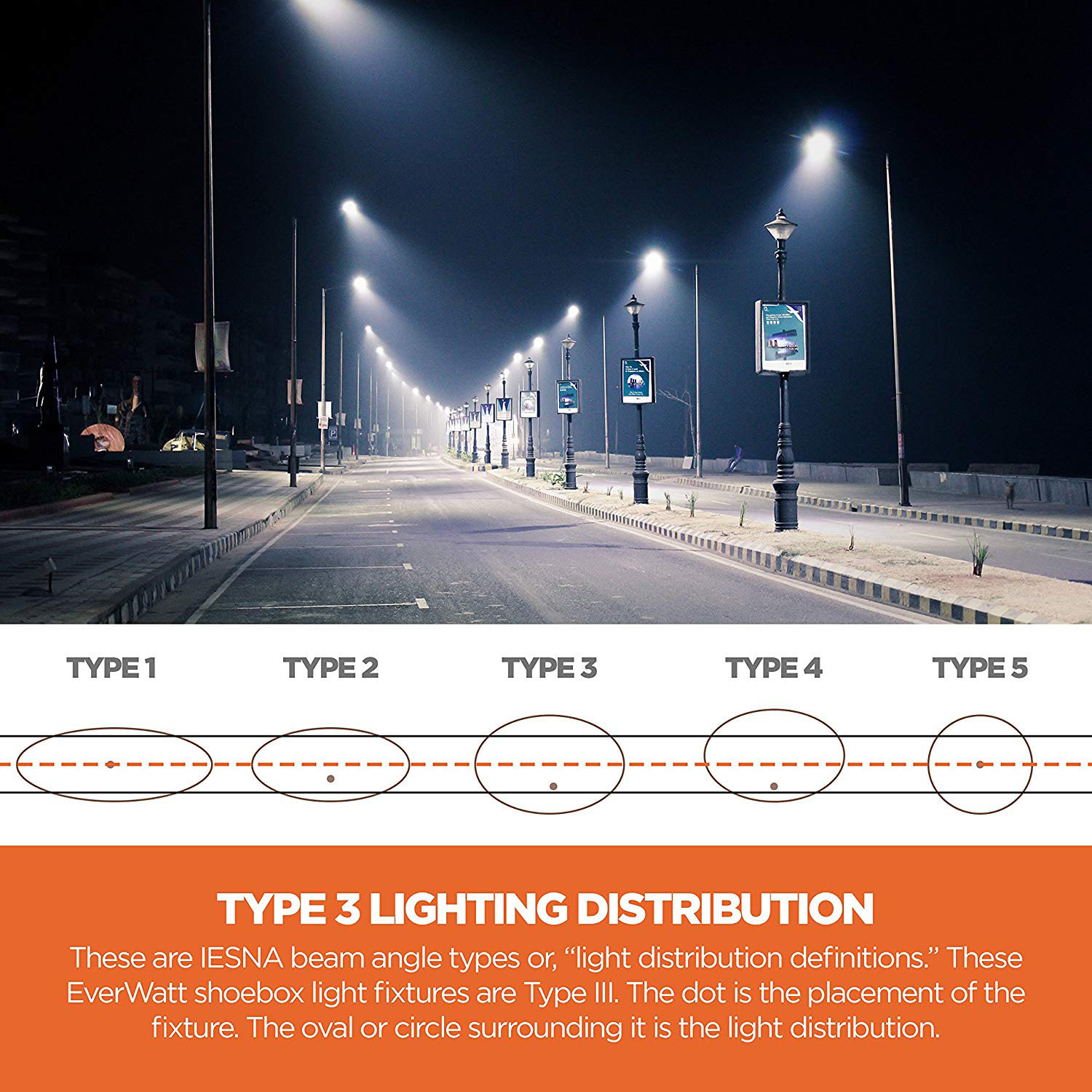
Explanation of lighting distribution types
We want to make this post better if we can. If you can think of something for us to add, or notice an error, please leave a comment below and we’ll dig into it. Thank you.
Which LED light is right for me?
This post will help guide you through some thinking for how to choose which LED light bulb is right for your application. For a better understanding of the different led light types, click here for an extensive explanation.
LED bulbs have made significant advances over the last few years making them a lot cheaper and more efficient than they used to be. Since there are so many LED fixture varieties, choosing an LED fixture is entirely different from picking a traditional fixture.
When shopping for bulbs or fixtures, you’re probably accustomed to looking for watts, an indication of how bright the bulb will be. The brightness of LEDs, however, is determined a little differently.
Contrary to common belief, wattage isn’t an indication of brightness, but a measurement of how much energy the bulb draws. For MH/HPS, there is an accepted correlation between the watts drawn and the brightness, but for LEDs, watts aren’t a great predictor of how bright the bulb will be. (The point, after all, is that they draw less energy.)
For example, Our smallest LED shoe box with comparable brightness to a 500W MH/HPS is only 60W. But don’t bother doing the math, there isn’t a uniform way to covert MH/HPS watts to LED watts. Instead of using Watts as a form of measurement, lumens or lm/W (lumens per Watt) should be used. The lumen (lm) is the real measurement of brightness provided by a light bulb, and is the number you should look for when shopping for LEDs. The reason that there is no real way to covert MH/HPS watts to LED watts is because of the following.
Not every LED fixture is made equal and some get a much higher light efficacy or lm/W than others. LED are a SSL (Solid State Lighting) which provides direct light. The lumens ratings are done in a 2X 360 degree integrating sphere. LED lights cannot be rated the same or side by side any other lighting since the light you get is direct.MH/HPS bulbs lumen output varies widely and light depreciation can range of 30%-60% with a high percentage of the stated lumen output coming from infrared and ultraviolet light. For more info on light degradation see this post here.We have listed replacement ranges on the “Additional Information” tab on each product, this will give you a replacement range for the optimal replacement.
For more information about light depreciation please click here.



